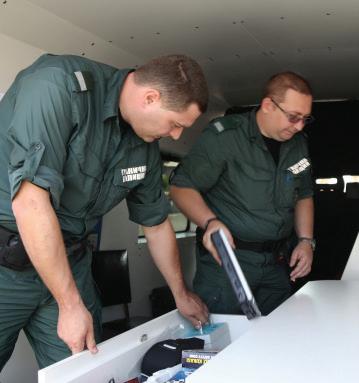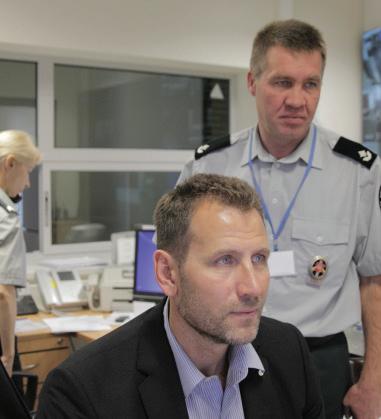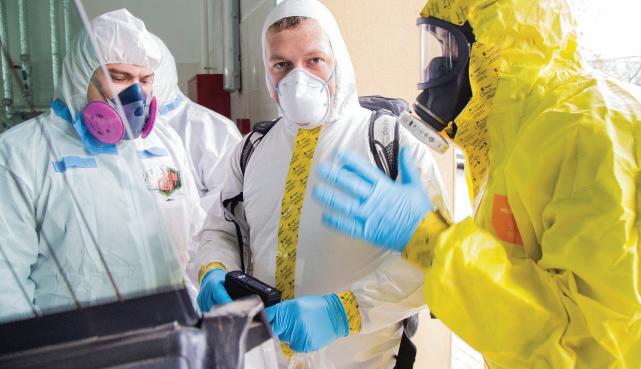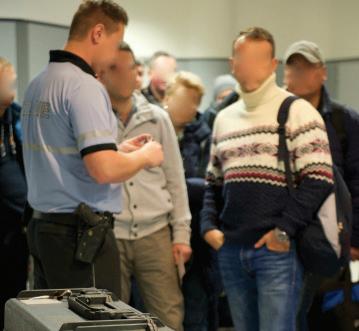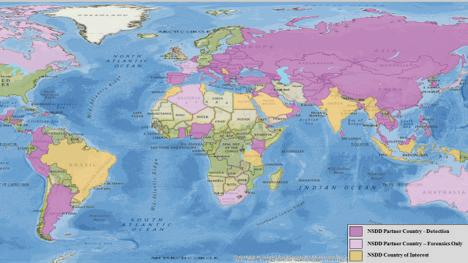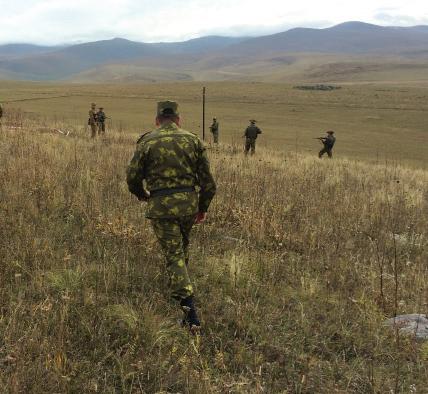
5 minute read
Strategic Approach to Counter Nuclear Smuggling
LAYERED DEFENSE
NSDD creates opportunities to detect smuggling incidents by providing law enforcement and border security officials with a layered defense around the globe.
Advertisement
One layer of defense against R/N material smuggling includes border crossing points. NSDD deploys radiation detection systems to these locations, integrating them into existing security operations. This allows automated, round-the-clock screening of persons, vehicles, and cargo. Because traditional security measures (canines, metal detectors, x-ray machines, etc.) are unable to detect radiation, NSDD’s radiation detection technologies are a necessary and effective way of alerting frontline officers to potential smuggling incidents.
In consideration of risks that international border security needs to address, another layer of defense includes routine and information-driven operations outside of BCPs. These may take place along blue borders (coastlines), green borders (areas between official crossing points), and administrative borders where radiation portal monitors are impractical. NSDD supports internal security operations by providing different tool sets which include mobile, man-portable, and hand-held radiation detection technologies as well as with other tools useful to law-enforcement agencies.
NSDD provides partners with capabilities that reinforce an integrated approach to combatting nuclear smuggling. These include integrating information received from operations and technology, which enables national and regional command centers to provide remote oversight to front-line officers and support alarm adjudication. NSDD also provides technical guidance in the area of nuclear forensics science specifically focused on skills and processes to investigate incidents of nuclear smuggling in support of legal prosecution.
TECHNOLOGY AND OPERATIONS
NSDD is the largest USG program providing detection technology and sustainability support globally. Although NSDD was initially focused on installing radiation portal monitors at official border crossings in formerly Soviet countries and at large container seaports, the program has evolved to address other potential smuggling pathways. Integrating R/N detection capabilities into existing security operations improves the effectiveness of the defense-in-depth strategy. NSDD builds R/N detection capabilities for the following types of operational environments:
Internal Security. Many of the unauthorized activities listed in the IAEA’s Incident and Trafficking
Database occur within a country’s interior. As a result, NSDD works with security and law enforcement agencies to understand current R/N detection capabilities and gaps.
NSDD provides internal security and law enforcement agencies with mobile, vehicle-based detection systems that are equipped with a radiation portal monitor skid, radiation detection backpacks, and handheld detection equipment that can be used to conduct varied operations, including intelligence-driven searches, roadside checks, and security at major public events. Green/Blue Border. NSDD works with border guard and law enforcement agencies to strengthen R/N detection and interdiction capabilities to deter the illicit trafficking of R/N material along land and maritime borders between official points of entry.
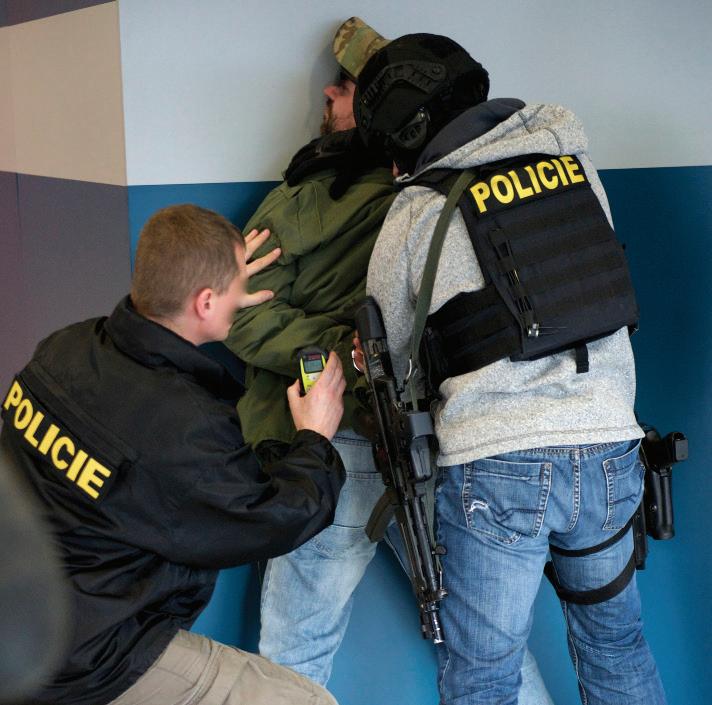
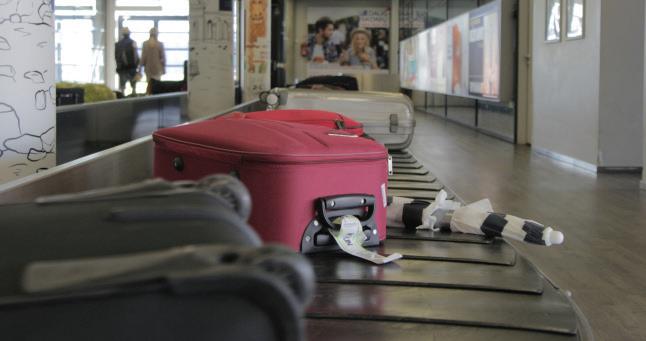
International Airports. NSDD has identified select international airports that are one-step out from high risk countries that have not traditionally cooperated with the
U.S. and have increased risks of losing R/N material. The operational mission is to screen targeted populations— using mobile, low-profile detection equipment—based on point of origin, destination, and pre-existing profile information.
Unregulated Maritime. NSDD engages with agencies responsible to detect smuggling of illicit goods through unregulated, small vessel maritime traffic and integrates
R/N detection and other inspection equipment into existing
security operations to build the partner’s capability.
Official Points of Entry. To address potential smuggling across official land borders, seaports, and rail crossings, NSDD integrates radiation detection systems into existing checkpoint operations that allows Customs and Border Guard officers to conduct round-the-clock screening of people, vehicles, and cargo for the presence of radiation.
Nuclear Forensics. Following an interdiction of R/N materials, forensic analysis helps determine both what the detected material is and where it originated. NSDD works with countries conducting
R/N detection operations to establish capability to quickly and reliably categorize the detected material and match interdicted materials against a national nuclear forensics library to determine point of origin.
In order to address the technical needs necessary to achieve the missions for the multiple operational environments, NSDD employs a Science and Engineering Team (SET) that is supported by technical experts across the DOE/NNSA national laboratory complex. The SET assesses performance of fielded technologies and evaluates new equipment and methodologies for integration within the program.
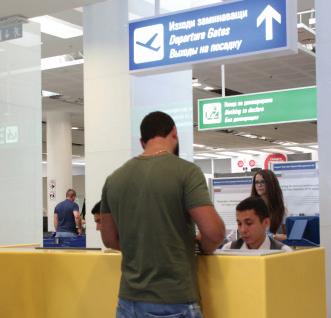
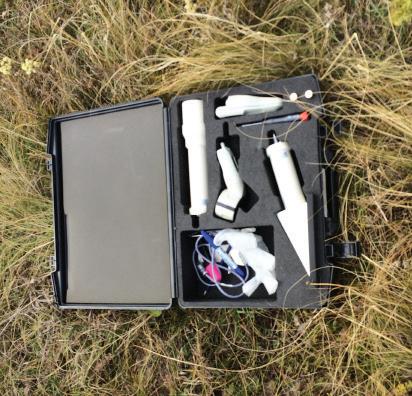
SUSTAINABILITY
NSDD’s approach for establishing sustainable partner country operations begins during the initial engagement with countries to understand their current nuclear security detection capabilities. Capabilities are evaluated across five performance areas and NSDD uses a suite of tools to tailor its approach to correct identified deficiencies or to help with process improvements. The five performance areas are independent of the type of detection operation and include:
Policies and Procedures. NSDD assists partner countries in establishing and improving national, regional, and site-level policies, regulations, and procedures necessary for the conduct of operations and response to nuclear security incidents.
Operations. The level of familiarity front line officers have with general radiation concepts and detection operations varies across partner countries. NSDD builds and
strengthens the officers capabilities to a baseline level to ensure radiation detection system operations are conducted properly.
Maintenance. Once radiation detection equipment is deployed,
NSDD assists partner countries in developing the capability to indigenously maintain the equipment.
This may involve training agency staff or training third party contractors to maintain detection systems. In addition, NSDD develops maintenance procedures and software analysis tools to assist in maintenance of deployed equipment.
Training. In order for law enforcement and border security agencies to operate and maintain deployed radiation detection systems over time, they must be able to train new officers and maintenance staff. NSDD not only provides program-developed training curriculum, but also builds the capability to train new instructors and develops additional curriculum to meet evolving needs.
Assessment. Assessment and exercises are an integral part of operations to identify gaps and deficiencies with current training and procedures. As a result, NSDD builds capabilities in planning, designing, conducting, and evaluating formal exercises. This includes drills, tabletop exercises, and field training exercises.
Using NSDD-conducted sustainability visits, trainings, and exercises, program staff are able to maintain contacts, understand capabilities and gaps across the globe, and assess future needs to prevent nuclear and radiological terrorism.
